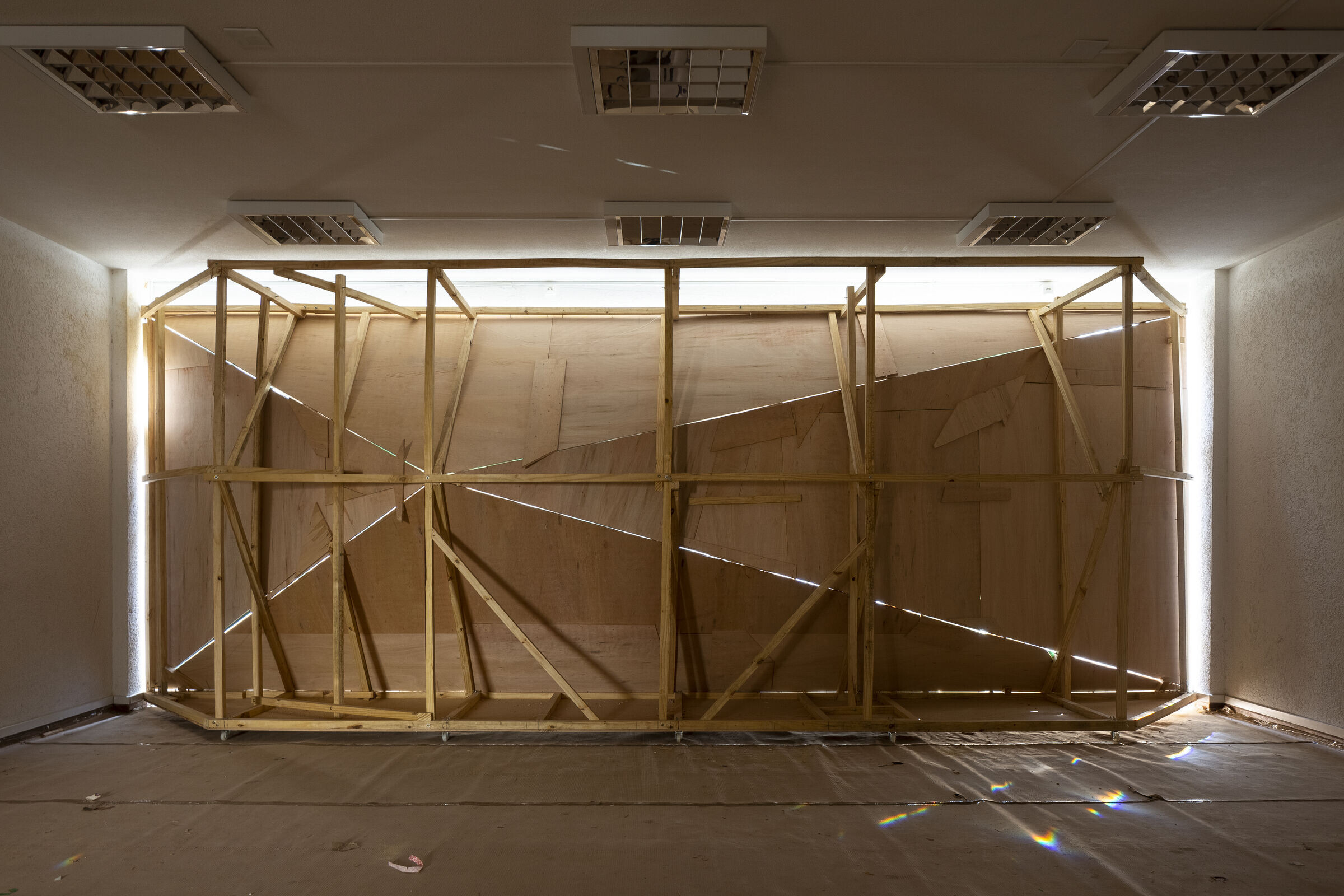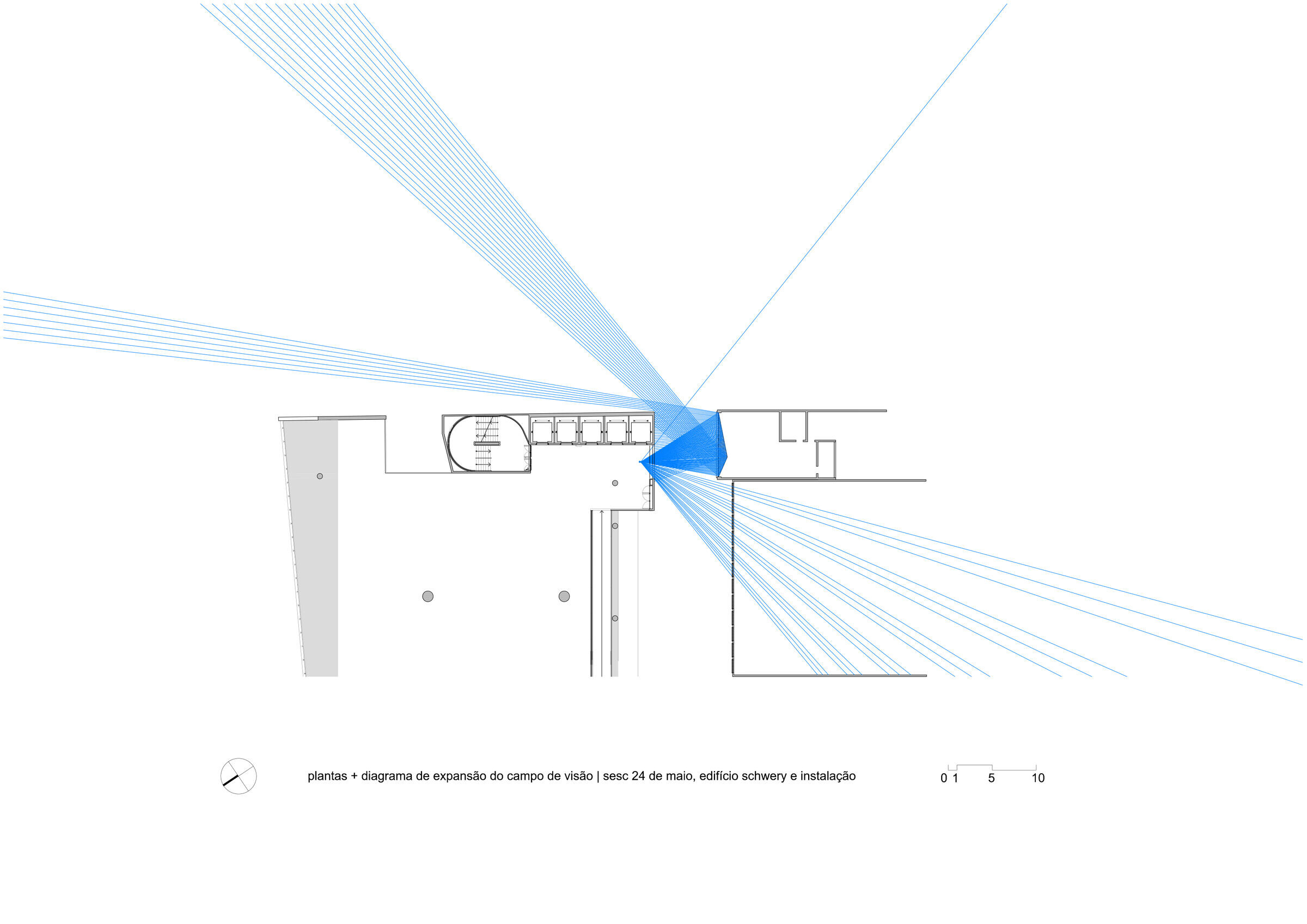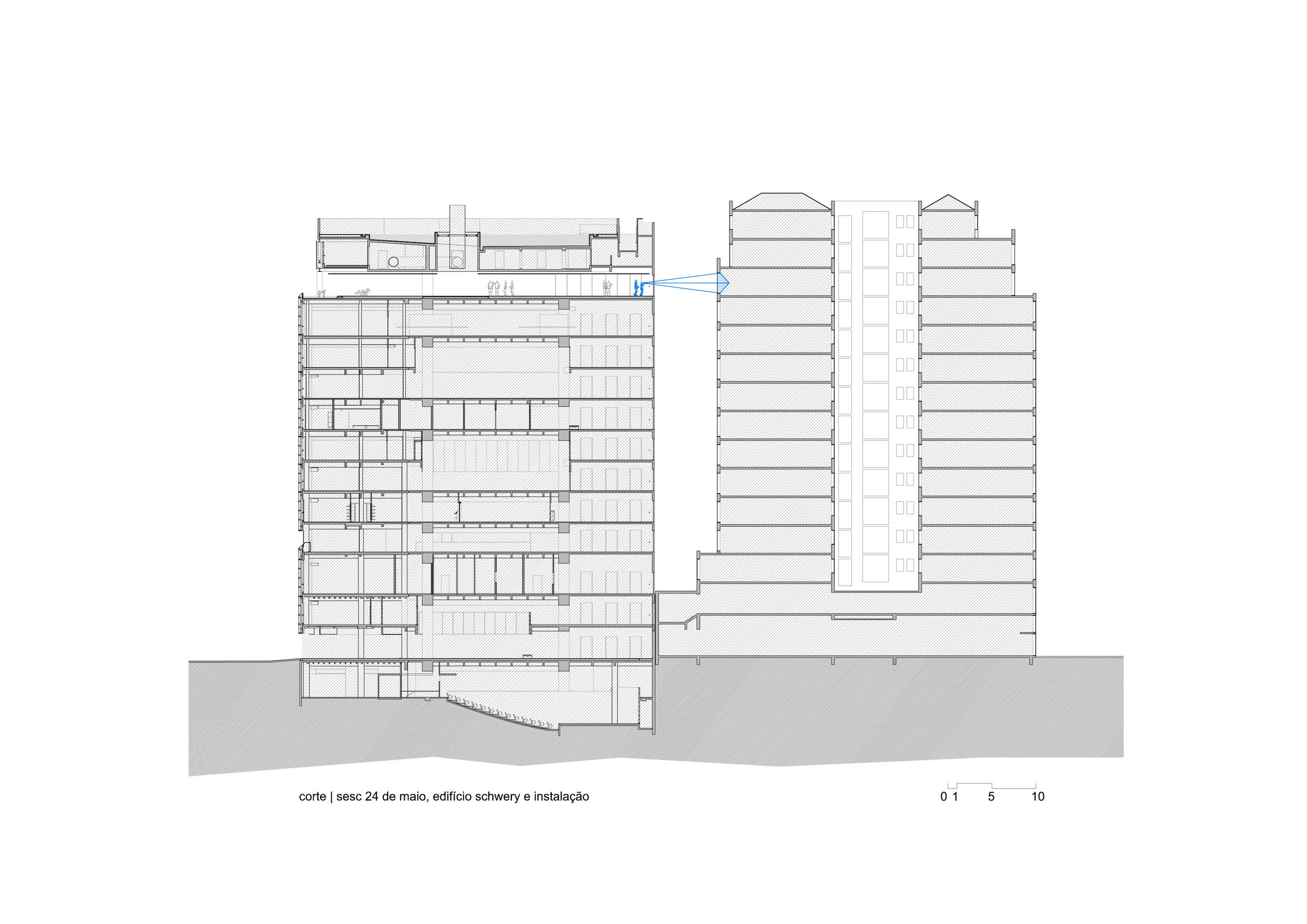"That there are mirrors.
Strange that the ordinary, worn-out ways
of every day encompass the imagined
and endless universe woven by reflections".
Excerpt from "Os Espelhos", Jorge Luis Borges
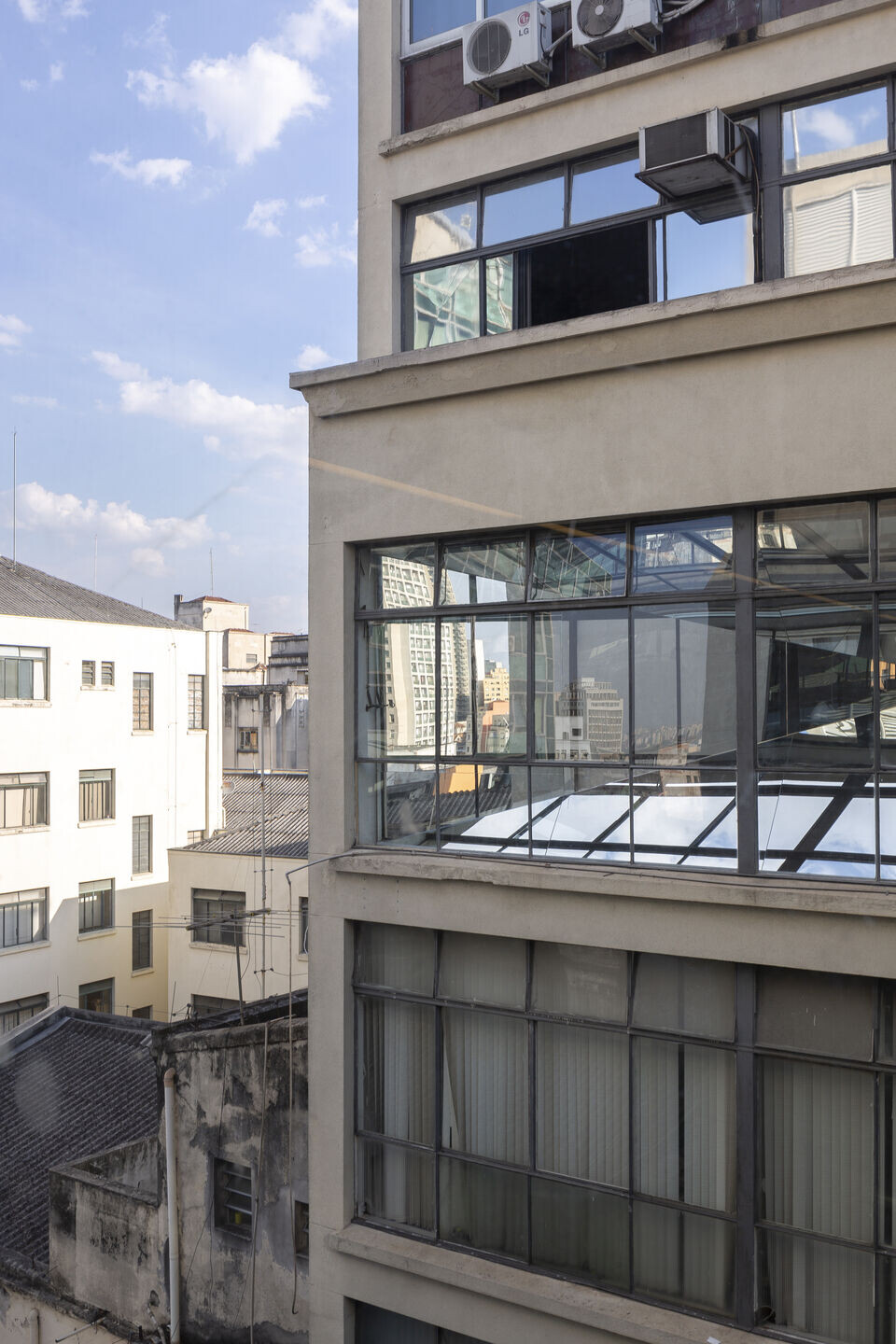
"And that's the desk of the man who plays solitaire all day," pointed out a Sesc 24 de Maio employee on the opening day of the 12th Architecture Biennale. Captured in the midst of the chatter that was taking place by the window, the comment among coworkers confirmed the intentions of the installation 'What we see, what looks at us'.
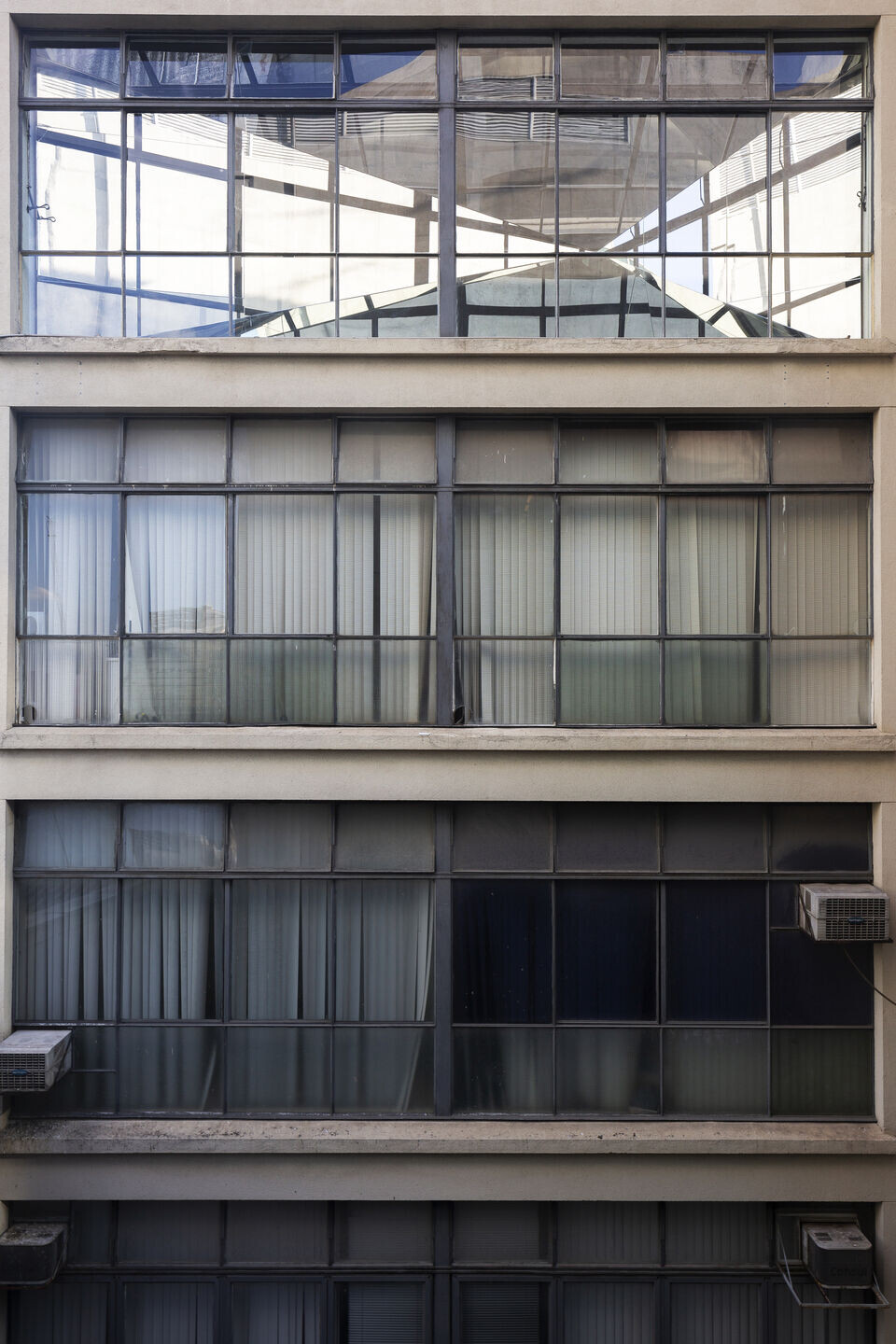
At the invitation of the Bienal's curators, the Brazilian-Argentine team of architects Vão and Adamo-faiden was formed especially for this project. As a premise, the device had to be conceptually inserted into the thematic axis Relatos do Cotidiano and be related to the context of Sesc 24 de Maio.
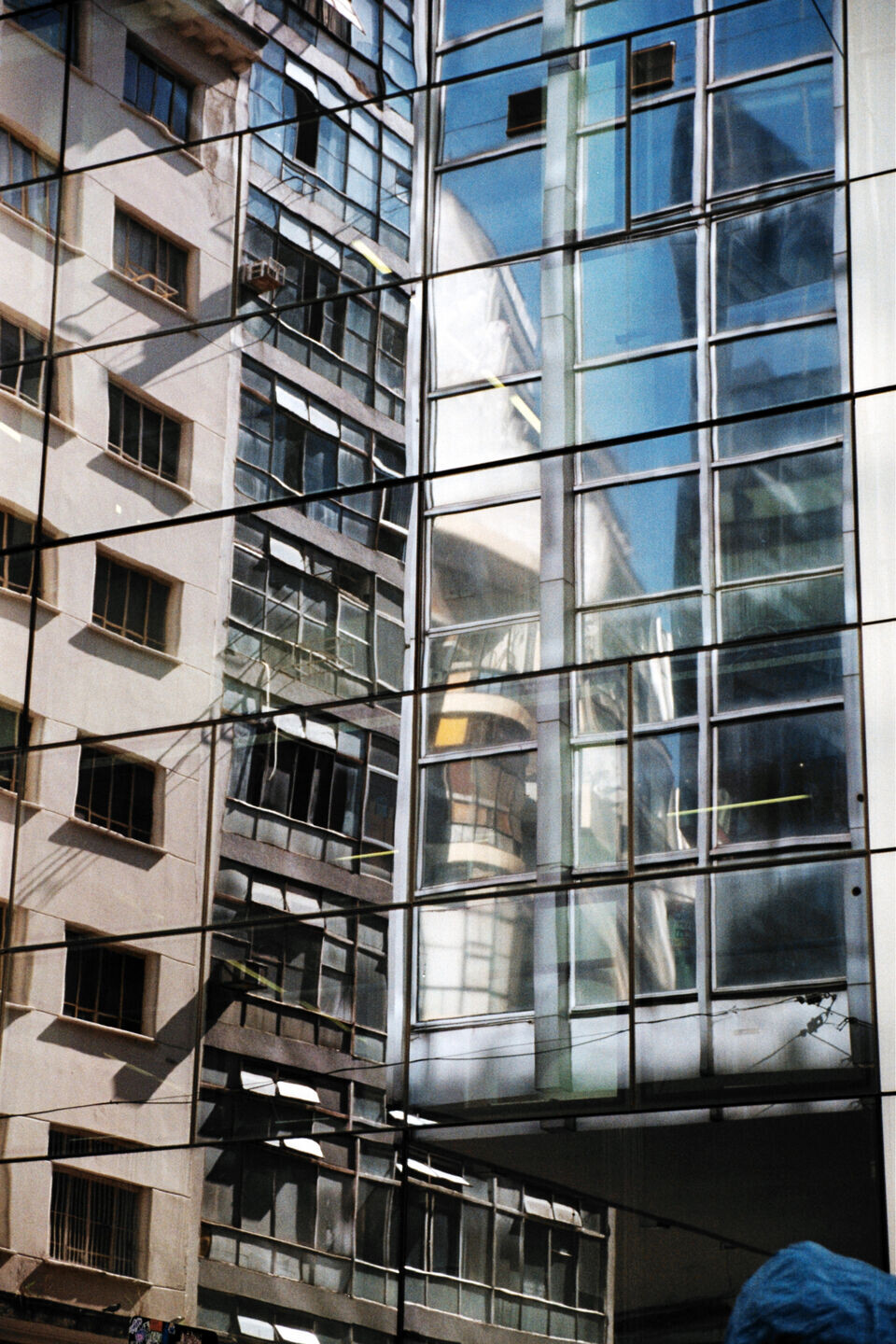
Everyday life is an intrinsic theme of the Sesc project developed by Paulo Mendes da Rocha and MMBB. Both externally, from where you can see the surroundings reflected in its façades, and internally, in the invitations to look at life outside, the built mass of the large facility is diluted in the central area of São Paulo. Openings and framing along the route visually bring users closer to the movement of the streets and buildings around them.

A panoramic opening, without glass or frames, on the 11th floor is the culmination of the dialog established with the city. Seduced by the view unveiled when the elevator doors open, we are automatically drawn to the edges to see the city from above. Next to a café, the observation deck is the place where people spend a long time sitting and observing the landscape made up of skyscrapers.
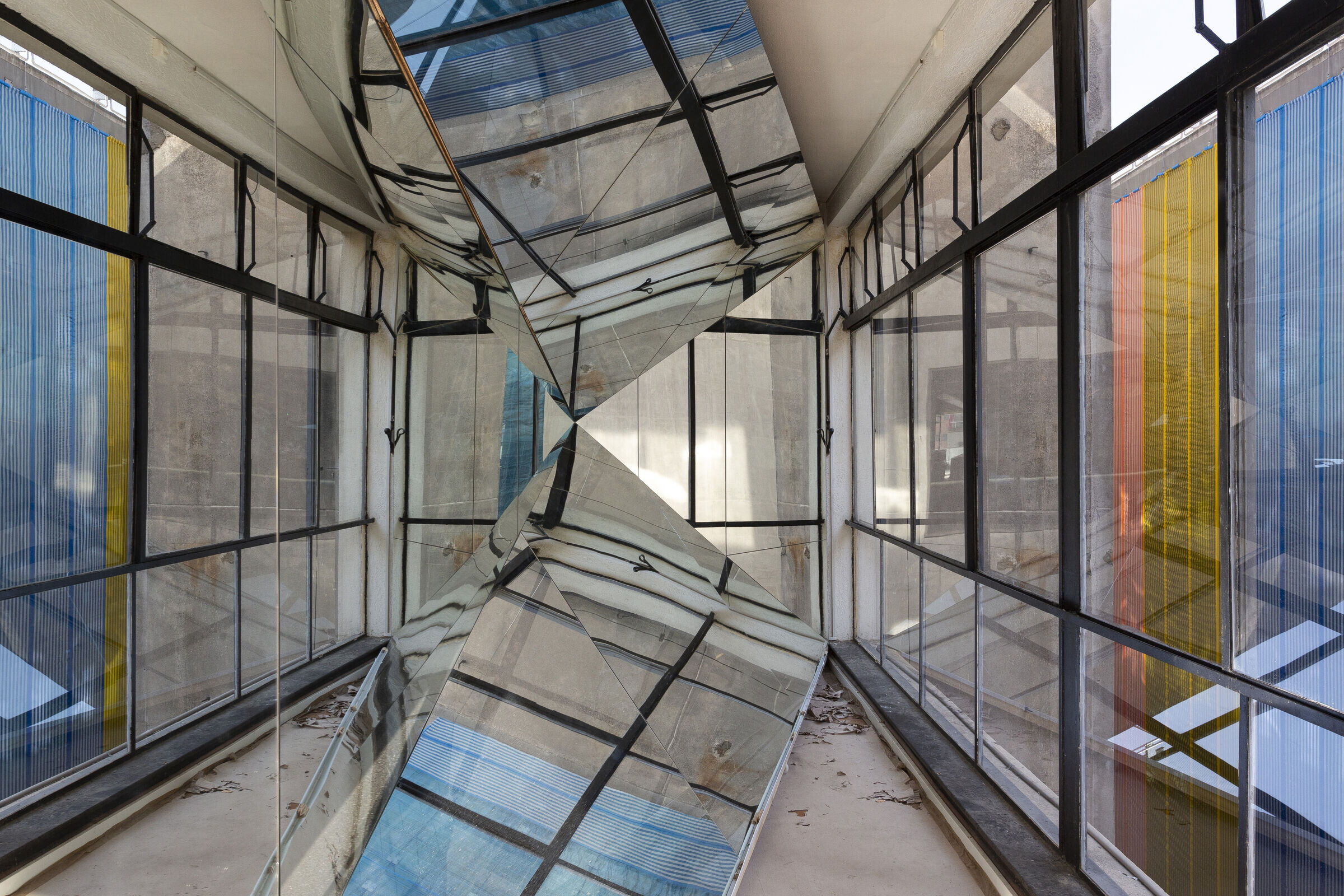
It took us a few trips to the observation deck to pay attention to a window in the concrete wall. The view, much less attractive, reveals a recess for natural light shared with the neighboring building, located just 7 meters away. This is where Sesc employees, not all day, but every day, practice standing and observing in brief pauses between entrances and exits from the circulation hub.
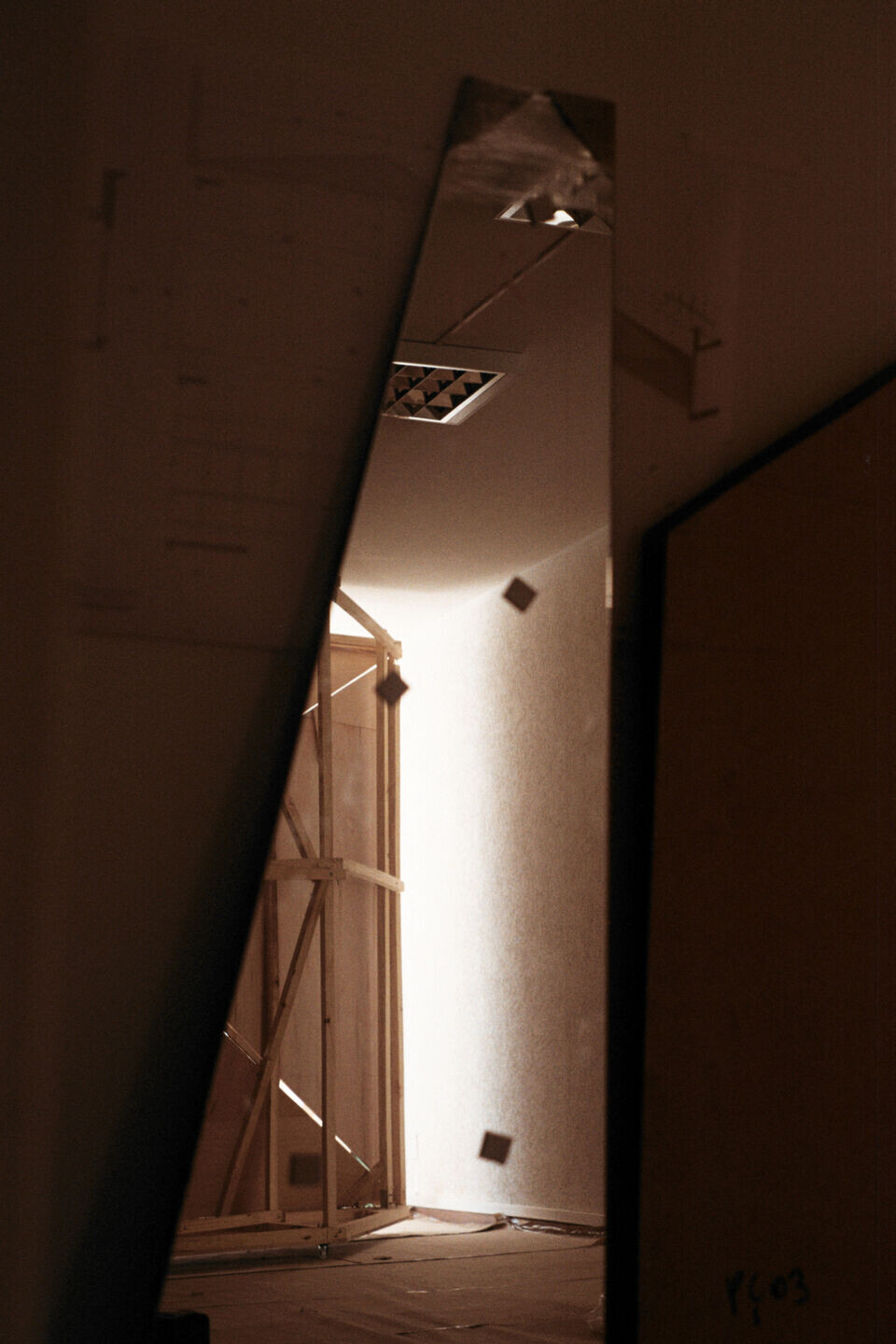
On the other side are the workers of the commercial building called Schwery, designed by the French architect Jacques Pilon in the 40s. The curiosity aroused by the routine of the strangers, those we always see but don't access, motivated the choice of an unoccupied commercial room as the location for the installation. Framed face to face, the windows are practically on the same level.
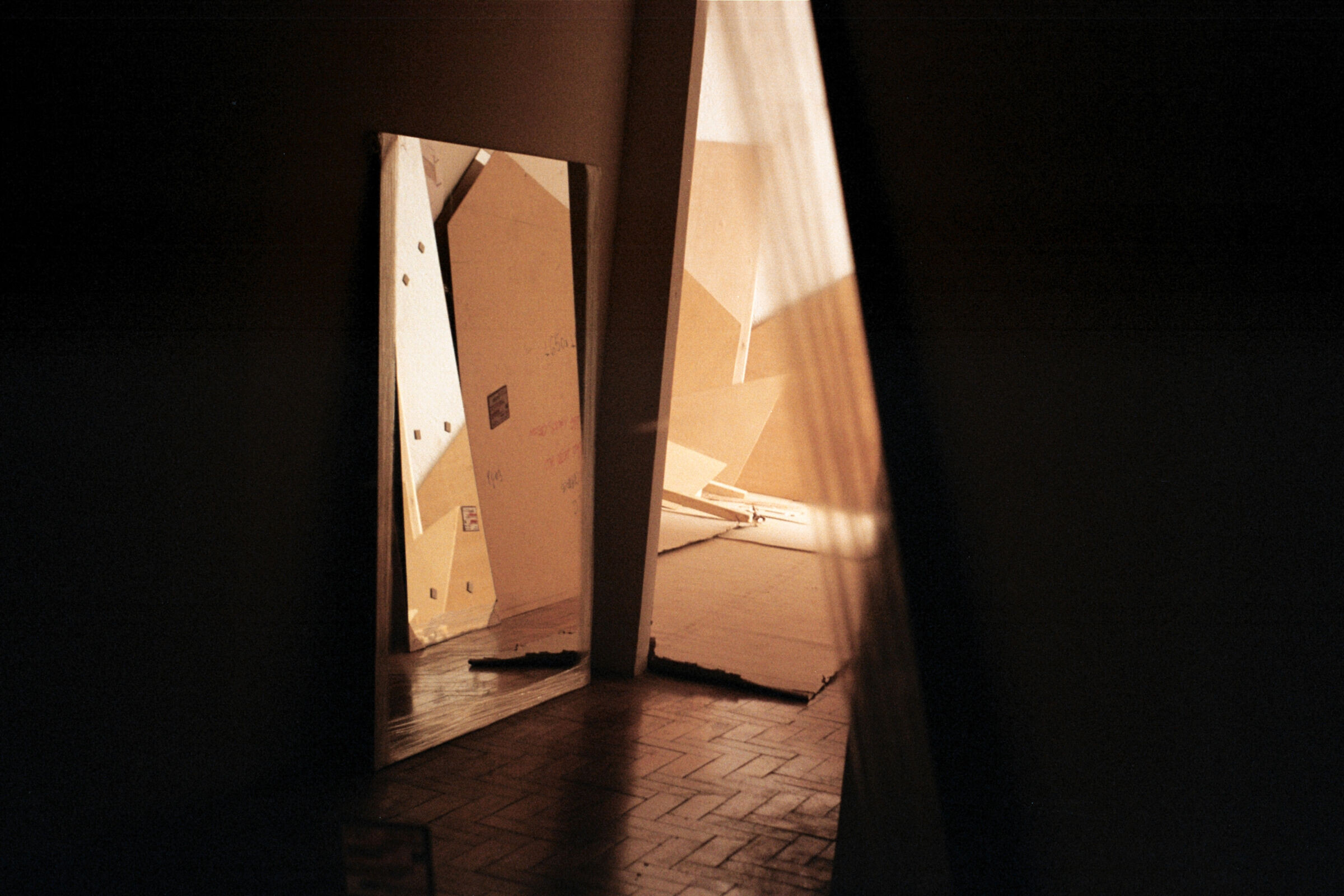
The room was filled with a wooden pyramid covered in mirrors. Its four inclined planes expand the human optical capacity, allowing us to see what we couldn't see before, be it the patch of sky hidden between tall buildings, now revealed in the plane that emerges from the floor; or the image of another neighbor projected to the right, the Galeria Monteiro, a project by architect Rino Levi (1960).
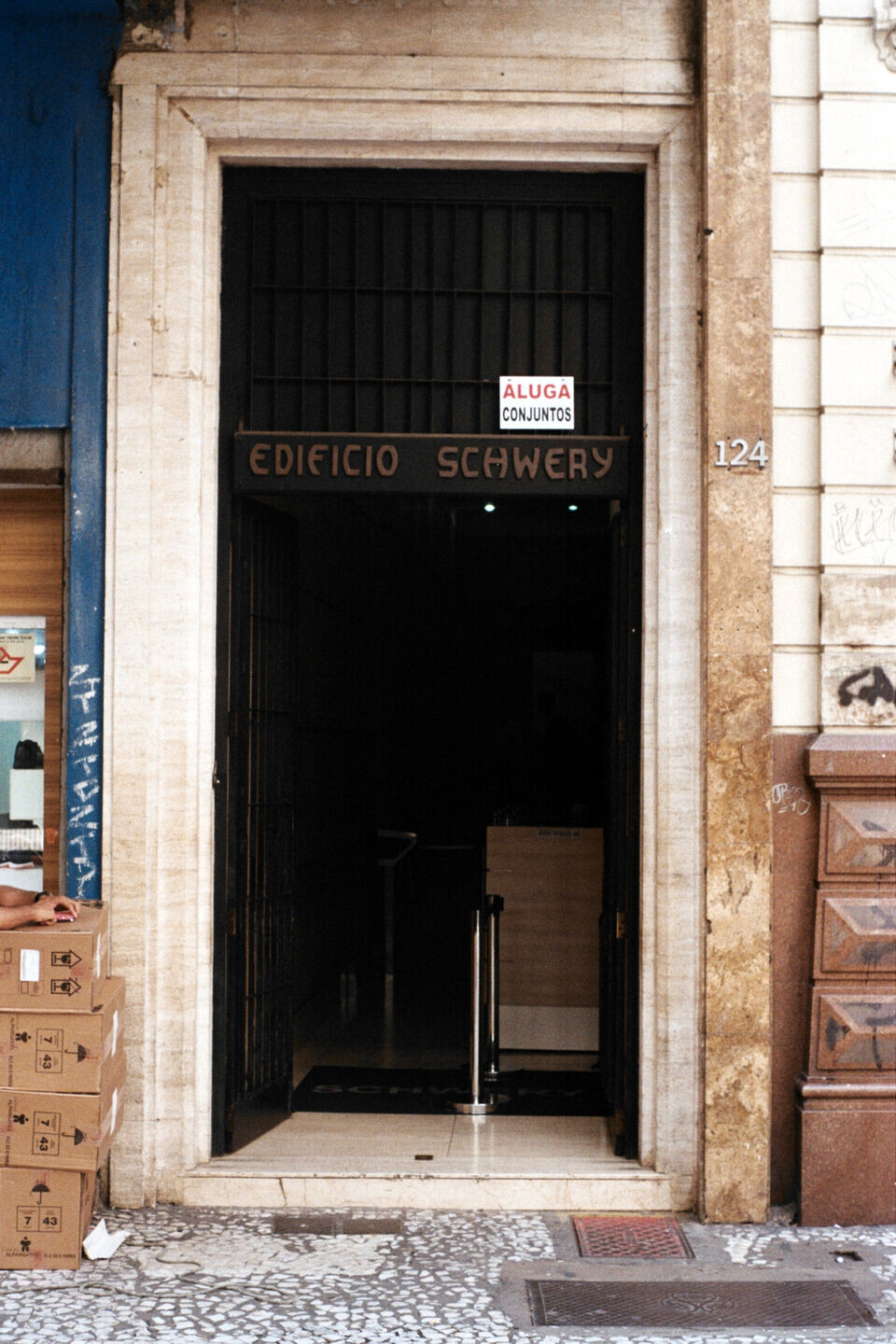
The Sesc appears to the left of the pyramid, causing disorientation. The duplication of its image in the neighbor gives us the impression that the space has been expanded. After all, what is really in front of our eyes? We don't know for sure, because mirroring here is the materialization of an imaginary space constructed by fragments and reflections, and not by the mere reproduction of reality.

'What we see, what looks at us' speaks between the lines about the relationship of donation and reciprocity between the viewer and the work of art, as discussed by philosopher, historian and art critic Georges Didi-Huberman, author of the book whose title was borrowed by this installation.
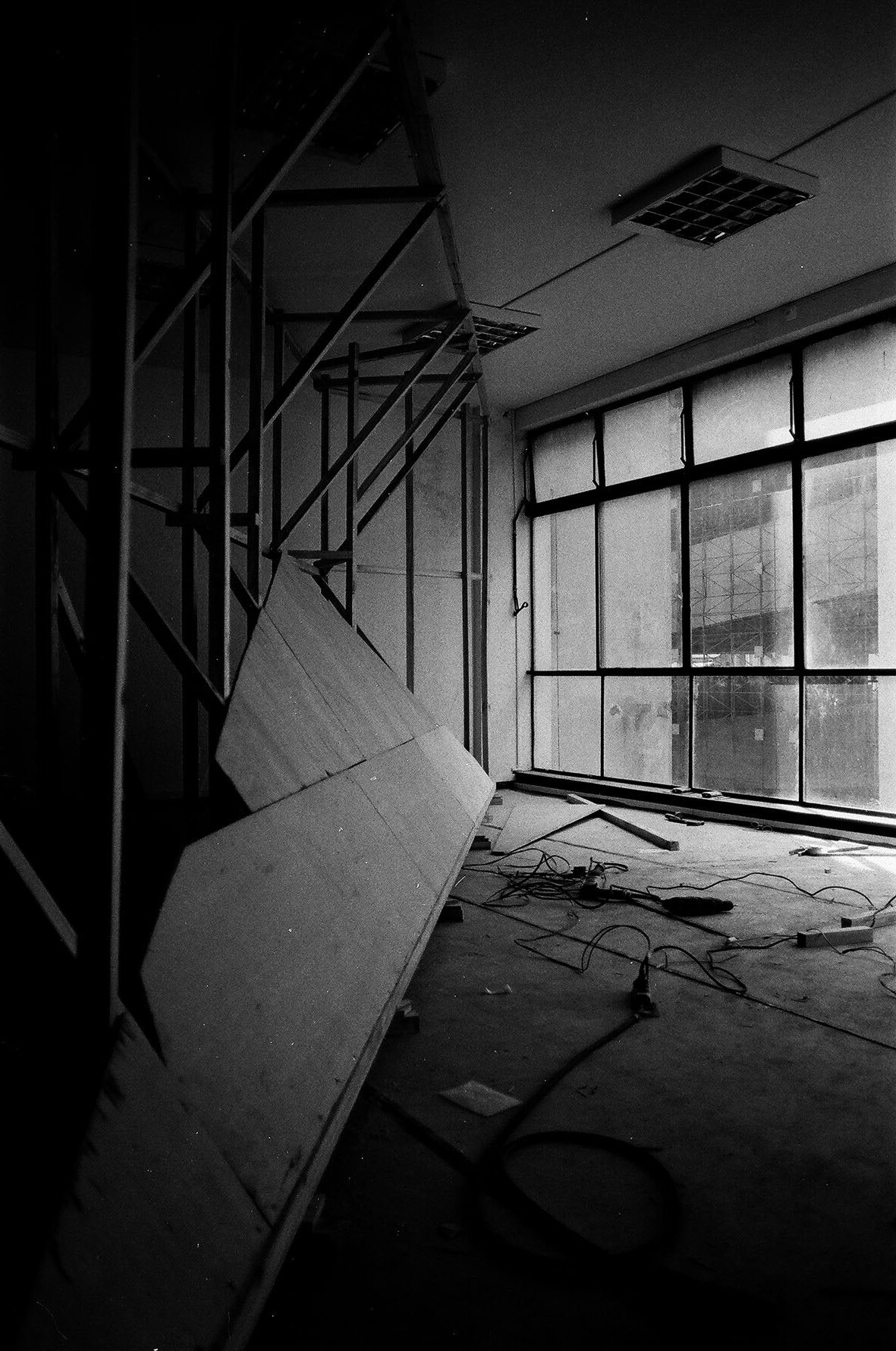
Perhaps it's also about facing our self-image, like the 'face that looks and is looked at' in Jorge Luis Borges' poem 'The Mirrors'. Or are we talking about the transformation of the image of the city that we have constructed? Could we also mention the voyeur? And who would that be? The curious neighbor or the widespread security cameras that monitor us every day, all day long?
Beyond the optical phenomenon, we are interested in the phenomenological aspects of the image created and the interpretative layers we can reach through it.
